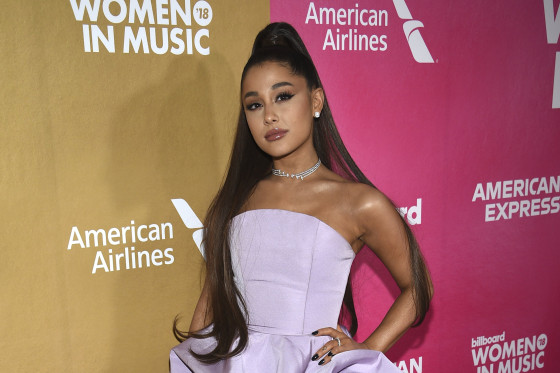Call it harassment culture or cyber bullying. we know that, for some people, the internet is a place where they let their id roam free — and, sometimes, their ids issue death threats.
We are, by now, used to seeing such threats targeting journalists, politicians and doctors that provide abortions, and there’s been no shortage of threats aimed at feminist writers over the past decade. But more recently, it seems like it doesn’t really matter what you do online, so much as whether or not you’re ready for the possible backlash to include threats to your health and safety.
Whether it on Twitter, Instagram or Facebook the evidence increasingly shows that fandoms can turn frightening rather easily, and death threats seem to have become the default response to criticisms of various idols, as toxic fan culture has seeped out of the hidden spaces of the internet and into the mainstream.

Take this week: Hyperbolic criticism of Ariana Grande’s latest video went viral, and the writer didn’t just get pushback but ended up with death threats necessitating the removal of the writer’s byline before the piece was pulled completely by the publisher. Another writer’s admittedly offensive take on the marriage of Priyanka Chopra and Nick Jonas went up and came down in a matter of hours, just in time for the seemingly inevitable online backlash of harassment and death threats.
Death threats aren’t funny, they aren’t harmless and they aren’t even the kind of hyperbolic speech anyone can pretend isn’t overtly disturbing. So why are they such a popular way to handle disagreements online?
It’s an online version of mob mentality, in which more and more fans are becoming Stans.
In aptly-named Stan culture (after the Eminem song about an obsessed fan), the measure of one’s devotion to an idol is measured by one’s willingness to defend that personal or cultural touchstone against all criticism or change at all costs. Largely allowed to develop unchecked in tightly-knit online communities (because no one from social platforms to parents took the early warning signs seriously), we now face a reality where the terms of the debate about people’s behavior on social media are whether online death threats count as free speech instead why some people defending a celebrity from criticism feel like death threats are appropriate.
Abusive language online isn’t a new problem; there are reams of research and conferences addressing the phenomenon. But for years, the so-called “credible” threats were few and far between because not only were most people content to hurl simple insults, but the worst vitriol came from spoof or anonymous accounts. Thus, some platforms instituted (theoretically well-intentioned but ultimately flawed) real-name policies that were, while others offered verification badges to prove that you were who you claimed to be. Neither, however, addressed the issue of violent threats as much as attempted to rein in the accounts most associated with its proliferation.
In fact, the standard response to online death threats has been, until recently, to insist that the people making them were essentially harmless, that harassers and bullies were on the edges of society – the so-called “weirdos in basements.” Yet the increasing frequency of such behavior seems to belie any notion that the perpetrators are rare or isolated.
And the consequences of ignoring them have only escalated, as behaviors like SWATting (calling in fake reports of violent hostage situations in order to secure a police response) have gone further mainstream. Andrew Finch, for instance, died over an alleged $1.50 bet between Casey Viner and Shane Gaskill after Tyler Barriss was allegedly hired by one of them to SWAT the other. Finch had nothing to do with their bet and wasn’t someone any of them knew — he was residing at the target’s former address — but their war of words led to his death at the hands of a misinformed police officer nonetheless.
If it was once possible to shrug off anonymous online threats as not credible, it’s much harder to do that when you know some threats have become a reality. It was never wrong to be bothered by threats of violence, but the fear felt by more recent targets of the behavior is increasingly seen as rational — and rooted in the reality that the risk of an unknown individual escalating from threats of violence to actual violence is, and always has been, impossible to judge.
The feeling of being overwhelmed by a barrage of angry, threatening fans may leave targets struggling to sleep, eat or work. To escape the stress and reduce their risk, they may have to uproot themselves and their families for months like Dr. Christine Blasey Ford has been forced to do.
We have to take the proliferation of toxic cultural dynamics seriously, and not just when we see the threats play out. That can mean parents and other adults talking to kids as soon as they begin to engage with fandom about boundaries, or social platforms and law enforcement making sure that the real-world consequences for abusive language online are clear, consistent and applied fairly.
Twitter, for instance, is finally taking more concrete steps to limit hateful language, Instagram has added an AI to its array of tools against abusive conduct and Facebook is, well… Facebook is going through internal issues. But ultimately this isn’t a problem platforms or parents can solve alone; it will take concerted effort from all sides — including fandom at large — to shift the culture away from the casual threats of violence that have become so much a part of online discourse, and toward healthy debate and acceptance of disagreement.


